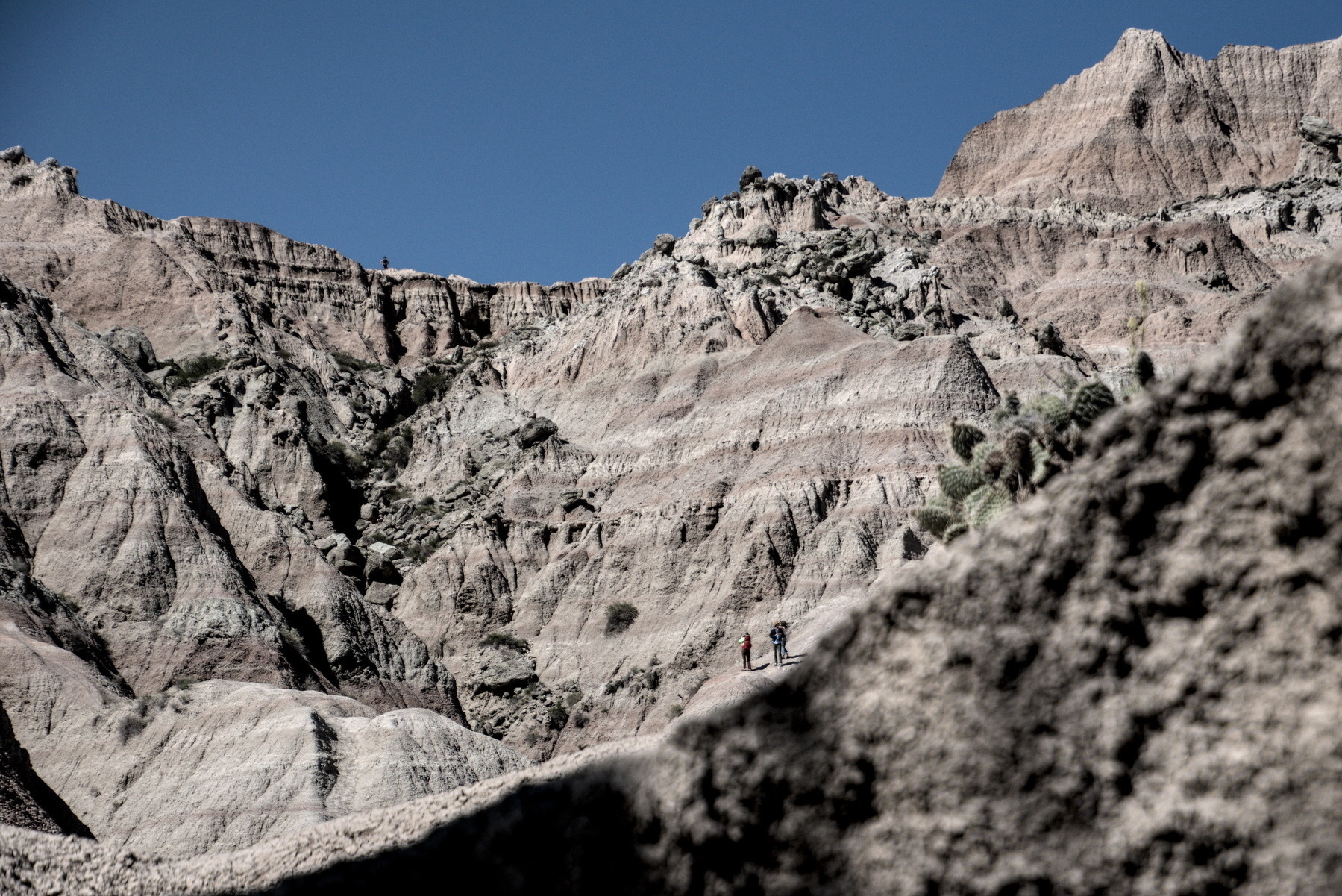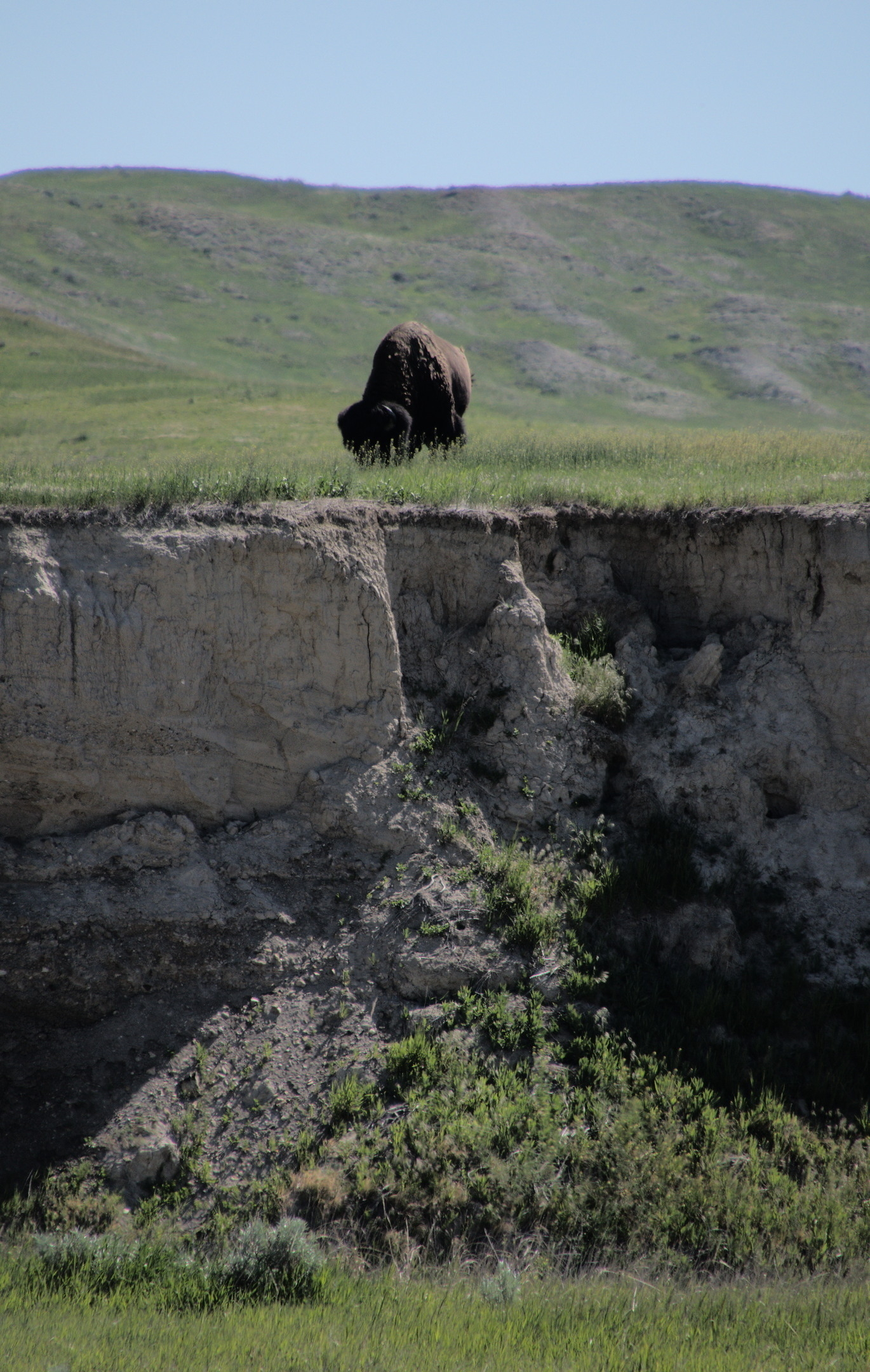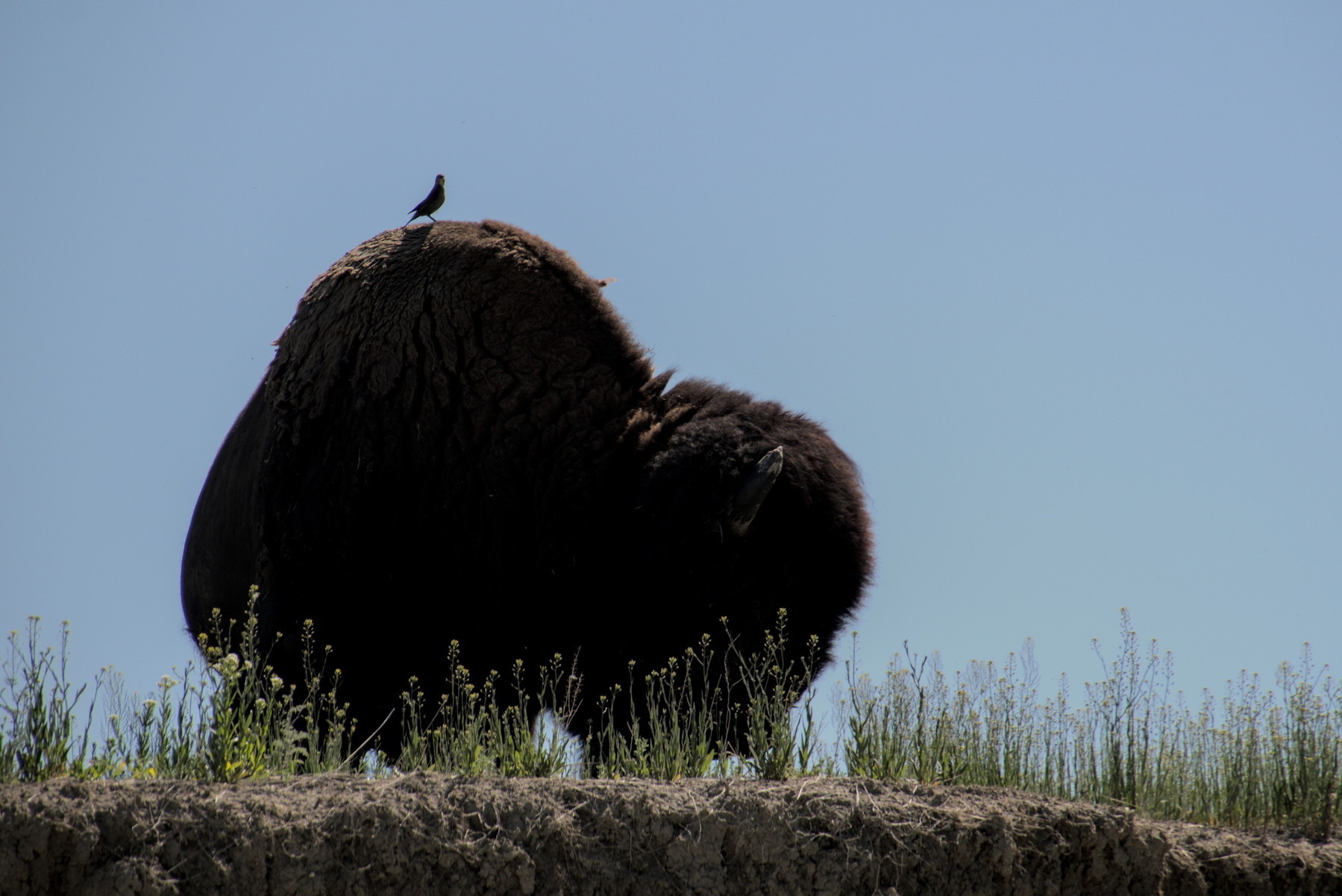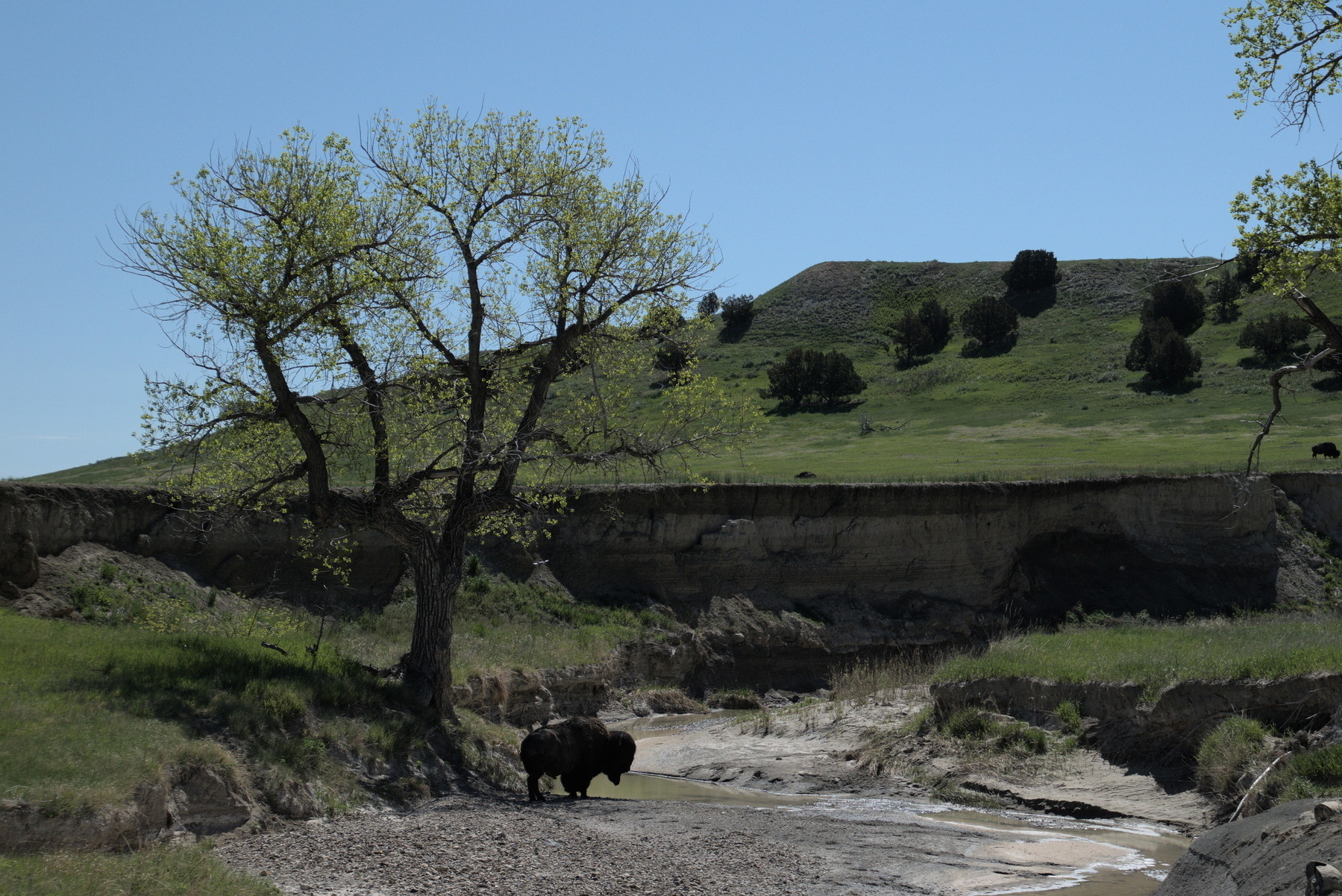Sage Creek Campround, Badlands National Park
My family had gathered in Chicago for a family wedding, and I had left time for a road trip after. My brother Neil and his sons Tim and Clem joined me. Neil had always wanted to see the Badlands of South Dakota, and the weather from Minnesota eastward was predicted to be rainy and cold. The boys grew up in the south of France and had packed light. All omens pointed westward. So we squeezed into a rental car and drove forever.
When we arrived at the Badlands, we went straight to the main attraction, which is amazing, but so unusual it seems alien. Also, it is relatively small, with crowded parking, constrained trails, and worse, limited photographic compositions. This was amplified by road construction and long waits for single-lane crawls through diesel fumes and industrial noise.
By the end of the day, we had found our footing, got some hiking in, the construction stopped and the crowds thinned. We hadn’t reserved in the park, so we drove the hour to Rapid City, which I didn’t mind because the setting sun lit up the grasslands and Cottonwood trees along route 44. What I did object to was a sense of detachment. I don’t like being a tourist photographer, snapping photos of things because they are amazing; I become resentful. Perhaps the nadir of this experience was seeing the Mona Lisa at the Louvre. I was penned, by stantion and velvet rope, with a herd of asian shutterbugs, all pushing to the front to snap a photo and leave. I saw no attempts to contemplate the painting, to experience what might be omitted from reproductions, nor could I manage it myself without getting trampled. In the end, I backed off, studied the crowd, and they became my composition.
The second day at the Badlands was the opposite of the first. We arrived early, at the opposite end, slowly travelling the dirt road along the northwest boundary. Here you find farms on the north, protected grasslands to the south, with glimpses of the wild erosion forms, and began to appreciate the predicament of the French explorers who discovered the place. The wild, crumbling forms we visited the day before aren’t mountains that rise above the plains, liike the Black Hills, they are what is left when that prairie collapses. When solid ground gives way to madness, we do not react well.
But to my photographic mind, this was a relief. The Badlands became something to explore, not revered. When the first winter storm comes to a beach, the sand accumulated in summer breaks and forms a ragged edge. The Badlands are quiet similar, a deposition of volcanic ash and other sediments that never welded into a solid structure. Once exposed to the elements, they offered no support to the bison and sod. They are washing away in a blink, geologically speaking, just a million years, half of which has already passed.
At the Sage Creek Campground near the norther border, we found the whole story in a beautifully lush and quiet valley. The hillsides are soft, rounded, green like Ireland, the bottomland all oxbows. Cottonwood trees are everywhere, but never frequent, seeming to prefer space to company.
And there are bison. Like the Cottonwood trees, they have a distinctive distribution. Many individuals, a few clumps, enough to know they populate the valley, never enough to form a cloud. All are grazing peacefully, but are so dark and massive that they form an inflection point in your sense of safety. This fellow was across the river and atop the bluff, so I felt as safe as if in a zoo.
And then I noticed he was standing above a mudslide. I wondered if a predecessor had been grazing there only to have the ground give way. Or maybe he could actually navigate that path down to the river? It seemed unlikely, but my feet turned upstream anyway, where I joined the boys at a bend in the river. We saw a Yellow-headed Blackbird, a Painted Turtle, and a frog too shy to be identified. I got my boot caught in the mud, a pale clay that offered no support but clung like wet pizza dough. Tim and I followed the river back down looking for more aquatic life, walking on the rounded rocks mixed in with the clay, enjoying the shade of the high bank on the far side, the outer edge of the oxbow. And then I looked up.
We were back at the break in the bluff, and the bison, who had wandered away earlier, had wandered back without a sound. He was standing ten meters up, looking straight at me, his face so dark I couldn’t see detail, but his horns were glinting clearly in the sun. I overcame flight and just back up a bit. He wasn’t angry, he was curious, and I felt he was really interested in our activity and conversation. And then he returned to grazing and a bird hopped from his feet to his back, presumably to do some grooming.
Tim wandered off and I continued along the river, keeping an eye on that bison, who paralled my route on the other side. I found a high point on my side with several exit routes, then stayed still to watch. And the bison obliged by taking a long sloping route down to the river to drink, right where I had been exploring.
This was not a quick process; he took fifteen minutes to tank up. And as I waited, I realized it was all here: the grasslands, the erosion, the geologic transforrmations happening so slowly that biologic individuals only know grass, water, and occasional untrustworthy footing. The broken landscapes at the other end of the park weren’t alien any more, they were connected to this scene. And from then on, I knew what I wanted to photograph.



